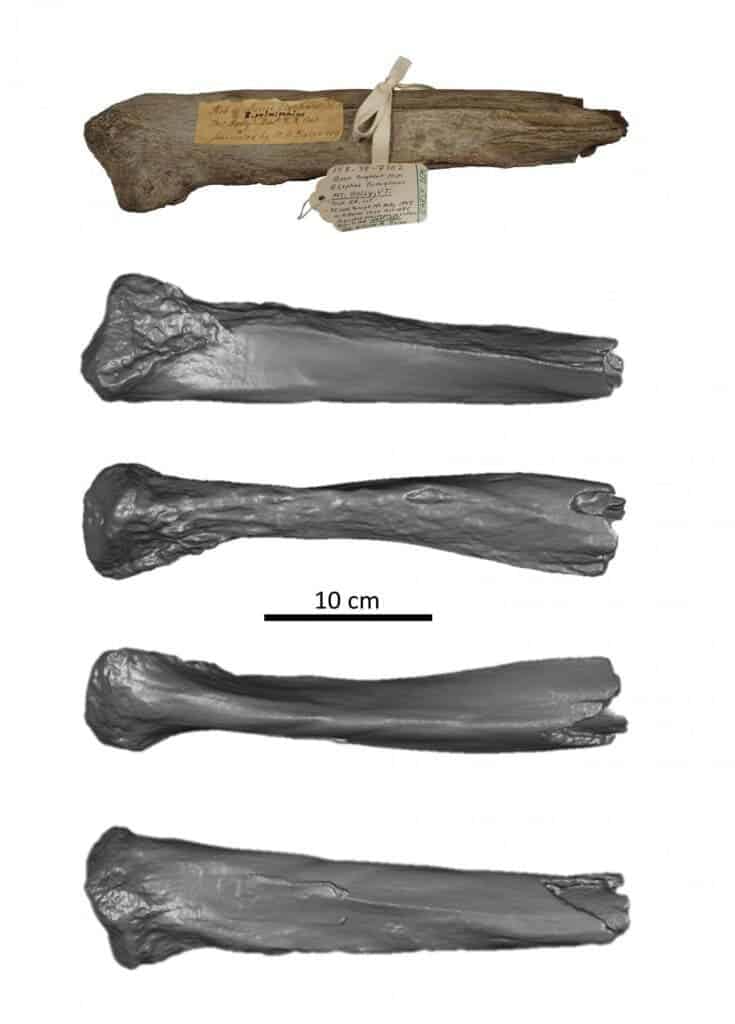New research at the Dartmouth College reports that the earliest humans to inhabit today’s New England likely shared it with woolly mammoths.

The finding is based on the radiocarbon dating of a rib fragment recovered in 1848 Mount Holly, Vermont. This process indicated that the animal is around 12,800 years old, meaning that it could have been around to witness the first humans arriving in the Northeast.
Old aquaintances?
“It has long been thought that megafauna and humans in New England did not overlap in time and space and that it was probably ultimately environmental change that led to the extinction of these animals in the region but our research provides some of the first evidence that they may have actually co-existed,” explains co-author Nathaniel R. Kitchel, the Robert A. 1925 and Catherine L. McKennan Postdoctoral Fellow in anthropology at Dartmouth.
The Mount Holly mammoth, as it came to be known, is Vermont’s state terrestrial fossil. It was unearthed in the Green Mountains during railroad construction works and includes one molar, two tusks, and a larger number of bones (how many there were is still unknown).
Over time, these fossils made their way to several different collections, and many have been lost. However, a rib fragment is housed at the Hood Museum of Art, while the Museum of Comparative Zoology at Harvard University and the Mount Holly Historical Museum also hold some bone material from this mammoth.
Kitchel stumbled across the rib fragment last December at the Hood Museum’s offsite storage facility. The bone was roughly 30 cm in length, stained brown with age. Together with DeSilva, he obtained a radiocarbon date of the rib fragment. This process involved taking a 3D scan of the bone before taking a small amount (around 1 grams) from its broken end. The sample was then sent to the Center for Applied Isotope Studies at the University of Georgia for radiocarbon dating.
Nitrogen isotopes in this sample (which are often used to gauge an animal’s diet) revealed lower-than-expected levels. In fact, the authors explain that these are the lowest recorded values for any mammoth in the Northeast area, and very low even by global averages. Their theory is that the mammoths in this area had to consume alder or lichens (nitrogen fixing species) to survive during the last glacial period. Carbon isotopes in the sample, meanwhile, pointed to it being around 12,800 years old — young enough to overlap with humans first entering the area around the Younger Dryas.
The findings raise the exciting possibility that these two species met. We know that people in the Midwest at the time used to hunt mammoths and bury them in lakes or bogs to preserve the meat, but we don’t really know whether people in the New England area hunted these beasts as well.
Part of the problem is a lack of evidence. During the last Glacial Maximum (18,000 to 19,000 years ago), glaciers started retreating from their maximum extent, and New England thawed gradually. As these glaciers retreated, they likely ripped up soil preserving any prior fossils, meaning we have very few intact specimens from this time.
“The Mount Holly mammoth was one of the last known occurring mammoths in the Northeast,” says DeSilva. “While our findings show that there was a temporal overlap between mammoths and humans, this doesn’t necessarily mean that people saw these animals or had anything to do with their death but it raises the possibility now that maybe they did.”
The team has just started to examine the remains using modern techniques, but hopefully, there are a lot of other lessons they can teach us.
The paper “First AMS radiocarbon date and stable C:N isotope analysis for the Mount Holly Mammoth, Vermont, USA” has been published in the journal Boreas.


